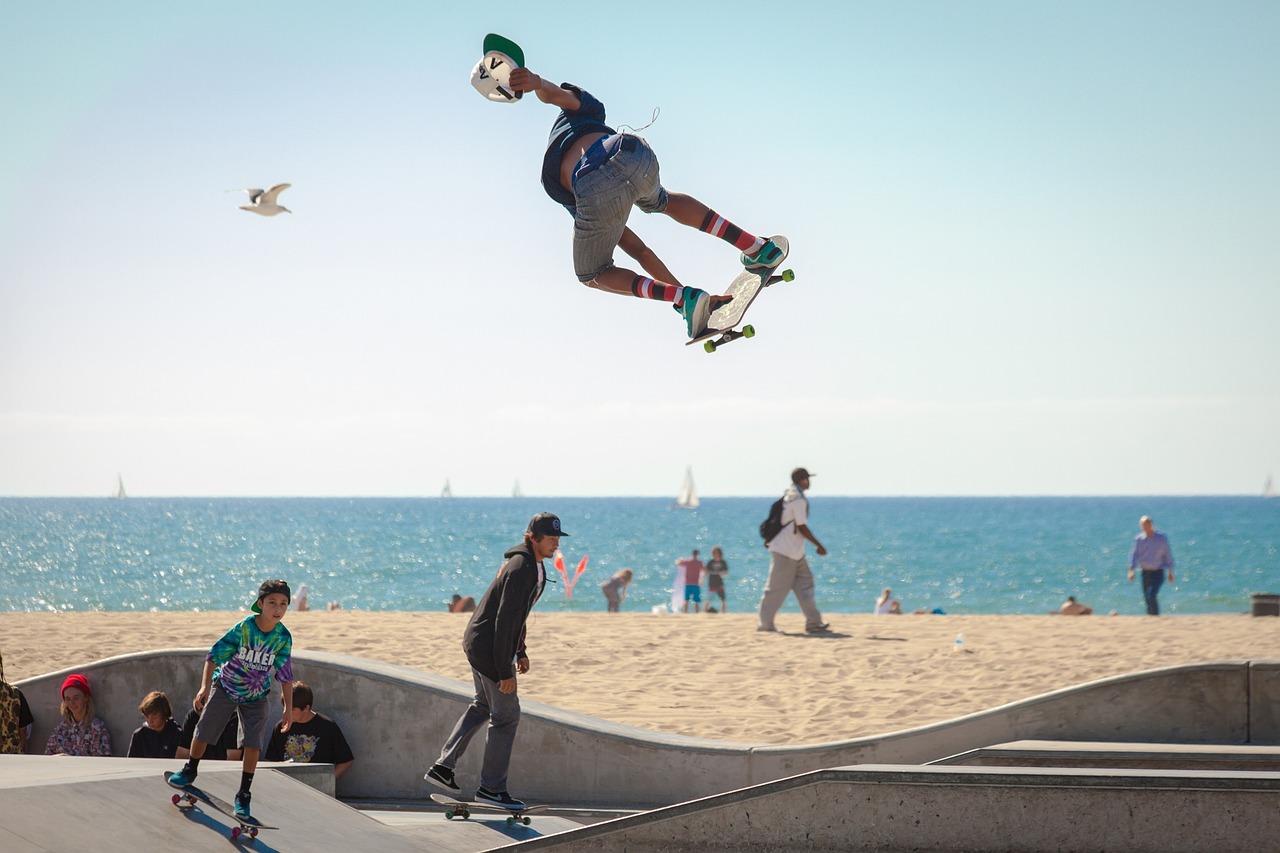 Skateboarding is trendy once more, proving again that this activity is here to stay instead of being those one-hit wonders. In fact, it has been almost 70 years since the first skateboard was born. In this article, you can look back at this time and how it became popular worldwide.
Skateboarding is trendy once more, proving again that this activity is here to stay instead of being those one-hit wonders. In fact, it has been almost 70 years since the first skateboard was born. In this article, you can look back at this time and how it became popular worldwide.
1. The 1950s
It is not clear exactly when and where the skateboard was invented, but it has been linked to the design of the surfboard. Sometime in California, somebody thought of adopting this for the road. At the end of the decade was the first peak of skateboarding. Towards the end of the century, the activity picked up and Roller Derby came out with the first official version of the skateboard.
2. 1960s
While skateboarding was started and was regulated by surfers, at this time, the first non-surfers tried it out. More than that, other forms of skateboarding came out like freestyle and downhill slalom. In 1963 its popularity has reached its peak, and competitions were setup.
However, just 2 years later, it suddenly becomes uncool and is thought of as nothing more than a fad. Although it continues, significantly fewer people continue skateboarding and the makers of boards lose business and close up. Skaters are now left to their own devices in manufacturing their equipment.
3. 1970s
In 1972, a new type of wheels came out. Before then, only clay or metal ones were available but suddenly urethane wheels begin to be produced. It leads to a renewal of interest in skateboarding.
The Ocean Festival in 1975 saw the Zephyr team introducing a brand new and innovative way of skateboarding, capturing the interest of the public. Unfortunately, it was also short-lived and in 1979, skate parks have to close when insurance becomes too expensive.
4. 1980s
Skateboarding has not fully died and there are some that continue to ride, as a form of personal expression. In 1984, though, skateboarding videos start to come out and allow skaters to feel connected to a bigger community and a united culture. Once again, the interest dies, though only vert skateboarding was hit hard.
However, before the turn of the decade, the movie Gleaming the Cube comes out and features famous skaters. It promoted a positive perception of skateboarders.
5. 1990s
Street skateboarding goes back into the spotlight but in a less positive image. It thrived with punk culture, and skaters become stereotyped with angst-filled youngsters.
In 1994, the World Cup Skateboarding is founded and the first X Games were conducted a year later. This brings in new money and interest in the activity; but in 1997, it starts to be classified under extreme sports.
6. 2000s
Contests and competitions in skateboarding multiplied all over the world as the activity starts to become mainstream, reducing a lot of the punk and anti-establishment perception.
Almost 70 years after the introduction of the skateboard, it has evolved and grown in creative and innovative ways, providing people with not just an alternate means of transport, but also with a way to make gravity-defying moves. It has truly become a fascinating and fun activity for everyone, regardless of age.
